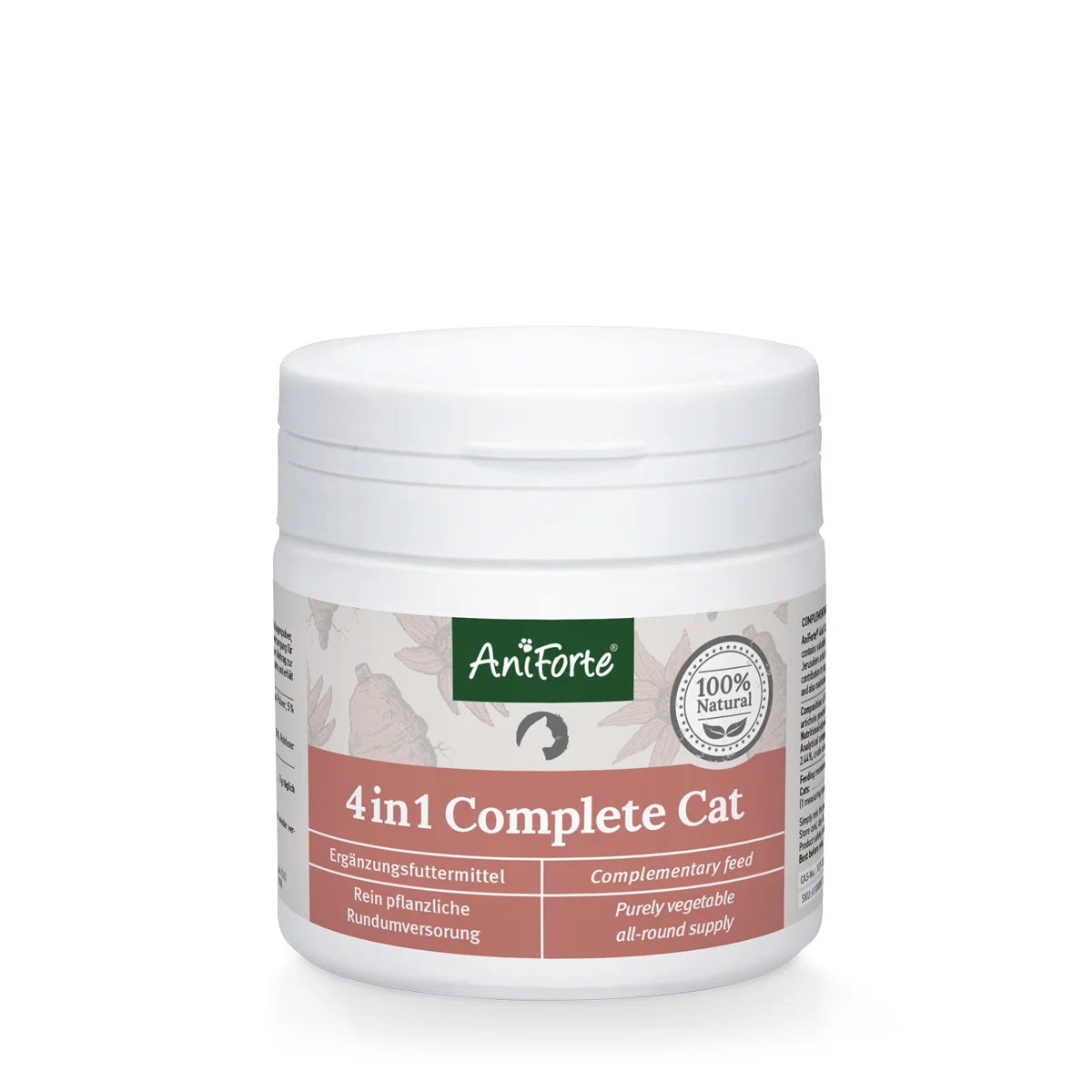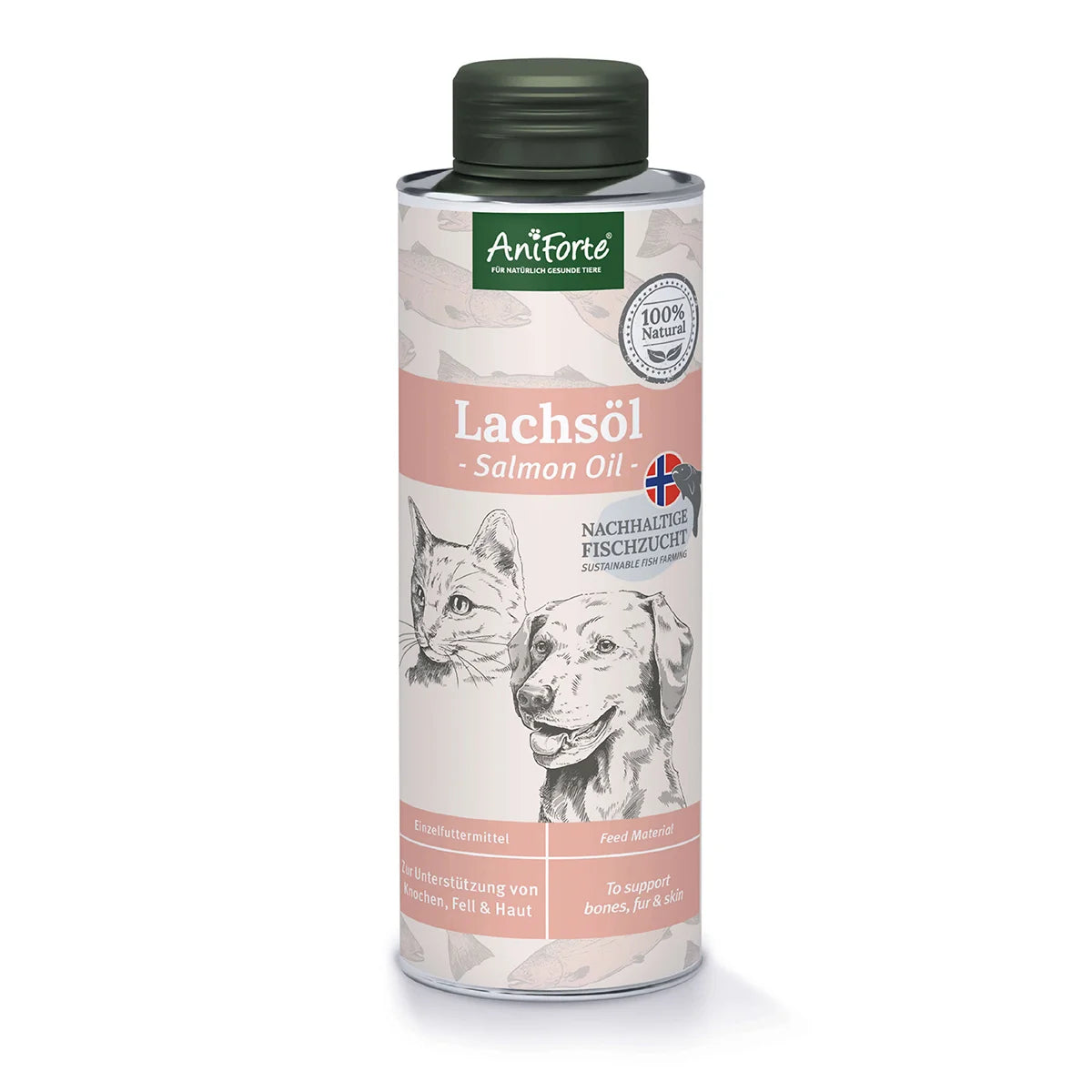
If your older cat becomes restless or even aggressive, it could be due to the thyroid gland. An overactive thyroid is the most common hormonal (endocrine) disease in cats and mostly affects older cats from the age of 8, but younger animals can also become ill.
The thyroid gland sits on the neck below the larynx and, in our domestic mammals, is divided in two to the right and left of the trachea. The iodine-containing thyroid hormones T3 and T4 it produces play an important role in energy metabolism and the growth of individual cells and the entire organism. They increase the heart rate and blood pressure as well as body temperature, sweat production, intestinal motor skills and the excitability of nerve cells. This is why the thyroid is often referred to as the body's powerhouse.
If thyroid cells are destroyed and too few hormones are produced as a result, the result is an underactive thyroid, a condition known as "hypothyroidism." If, on the other hand, too many hormones are released (e.g. due to the influence of a thyroid tumor), one speaks of an overactive function, or "hyperthyroidism."
Note: cats usually only get an overactive thyroid, while dogs tend to suffer from an underactive thyroid!

What causes hyperthyroidism in cats?
In about 98% of cases, benign growths of thyroid tissue are the cause of an overactive thyroid in cats. Often it is a so-called "adenomtous - multimodular hyperplasia," in which tiny nodules develop in both thyroid lobes so that the thyroid gland as a whole enlarges. Somewhat less often the growth occurs in the form of unilateral benign tumors (thyroid adenomas). Very rarely the cause is a malignant tumor. An enlargement of the thyroid gland leads to an increased production of thyroid hormones.
What triggers these adenomas is not really clear yet. Diet and environmental influences, but also genetic factors could have an influence. According to studies, feeding commercial cat food is a risk factor for the development of the disease, which is attributed to the high content of thyroid-enlarging substances such as soy isoflavones or phthalates. In addition, environmental factors such as the use of certain cat litter may also be involved in the development of the disease. Flame retardant chemicals such as diphenyl ether in home textiles, carpets and furniture are also traded as suspects. Even though the use of diphenyl ether was banned in the EU some time ago, there are certainly still plenty of furnishings that contain the substance or are being imported from other countries.
What are the symptoms of an overactive thyroid?
The first signs are often not perceived by the cat owners as an illness, but rather as a sign of health. The increasingly increased activity of the old cat, combined with increased appetite, is reminiscent of the young, growing cat. Often the cat is only presented to the vet once it loses body weight despite the increased appetite and increased food consumption and other signs such as increased thirst (polydipsia) and increased urination (polyuria).
Typical symptoms of an overactive thyroid in cats are:
- restlessness
- hyperactivity
- increased heart rate and high blood pressure
- significantly increased appetite
- weight loss up to extreme emaciation
The overproduction of thyroid hormones T3 (= triiodothyronine) and T4 (= thyroxine) and thus their increased release into the blood leads to an increase in the metabolism in each individual body cell. This increases the energy consumption of every cell, which in turn means that cats with an overactive thyroid have to consume significantly more food in order to be able to provide enough energy. As the disease progresses, it becomes increasingly difficult for the cat to meet its energy requirements through food consumption. This is how weight loss ultimately occurs. The emaciation of the cat despite a good appetite is the most striking sign of an overactive thyroid.
Other common symptoms:
- great thirst
- frequent urination
- coat changes such as hair loss, bald spots, and dull, dull coat
- vomiting
- diarrhea
- aggressiveness
- excessive or decreased grooming behavior
- weakness and lethargy
- damage to the kidneys, eyes and heart
- in an advanced stage: loss of appetite
How does the veterinarian diagnose hyperthyroidism?
In most cases, the veterinarian can feel an enlarged thyroid gland on the cat's neck. A healthy thyroid is usually not palpable in cats.
In order to get a reliable diagnosis, the vet should do a blood test, because almost all cats with an overactive thyroid gland have too high a concentration of the thyroid hormone T4 (thyroxine) in the blood serum. In some cases the diagnosis is more difficult because the T4 value is only slightly increased or even in the normal range. If all other symptoms nevertheless point to an overactive thyroid, either the T4 determination can be repeated after a while or free T4 (fT4) and TSH in the blood serum can be determined.
Due to the frequent accompanying diseases it is also useful to do a complete blood count and a serum profile, for example to check the liver and kidney function and also the heart. If it is then suspected that other organs have also been affected, an X-ray may be necessary or an ultrasound may be performed to assess the organs in the abdomen.
What are the options for treating hyperthyroidism in cats?
Generally, an overactive thyroid is easily treatable. However, if the condition goes undetected and is not treated, the cat's condition worsens.
The most common therapy for an overactive thyroid consists of lifelong administration of anti-thyroid drugs. These are drugs that interfere with the formation of T4 and T3 by blocking the incorporation of iodine. So they merely suppress the disease and when the medication is discontinued, the previous symptoms reappear. Anti-thyroid drugs for cats are available in the form of tablets or an ointment that can be applied to the ear and massaged into it. In order to avoid initial side effects or negative effects on the kidneys, therapy is often started with a low dosage. If the blood and urine values remain good, the dose is increased gradually after two to three weeks.
In certain cases, the thyroid can also be surgically removed. Surgical removal of the thyroid is useful, for example, in cats with a malignant thyroid tumor as long as no metastases have formed. The procedure should be done in a specialised veterinary clinic and the cat should be monitored in the clinic for some time afterwards, as various complications can arise. The most common complication is a (mostly temporary) life-threatening calcium deficiency, which arises because the parathyroid glands have been removed (only in the case of large thyroid tumors) or have yet to recover from the procedure. If both thyroid lobes have to be removed, the operation will result in an underactive thyroid and the cat will need thyroid hormones in tablet form for life.
Another possibility is radio-iodine therapy. Here the cat is given radioactive iodine. This destroys the thyroid tissue. Disadvantage: the cat has to be kept isolated for a while in a special room because it "emits radiation." Excrement must be disposed of as hazardous waste. Only trained and protected personnel are allowed to look after the animals. For cats with metastatic malignant tumors, which are very rare, radioiodine therapy is the only chance to survive the disease.
What should you watch out for in drug treatment with thyroid hormones?
If possible, always give the thyroid tablets at the same time of day. Either always give the tablet with or without food. If you forget a pill, it is usually not a problem. Continue the treatment as usual the next day. However, if a blood test is due, the vet must be informed that a tablet has been missed. The examination appointment should possibly be postponed.
Notice whether the cat is completely symptom-free or whether symptoms of an overactive thyroid may return after a while. Then the thyroid values should be checked again and the medication dose adjusted if necessary.
If your cat shows symptoms of hypothyroidism, such as fatigue, loss of appetite, excessive weight gain, or hair loss, the drug dose is probably too high. In this case, take your cat to your vet again.
Rarely, the thyroid medication can cause side effects such as loss of appetite or vomiting. They usually only appear briefly at the beginning of treatment and are harmless. However, if the side effects persist, the dosage may need to be adjusted or the drug discontinued. Then it's best to make an appointment with your vet.
Supportive nutrition for hyperthyroidism
Iodine-free food has been developed that works in theory. In practice, however, it becomes more difficult because the cat is not allowed to receive any other food until the end of its life. So the iodine-free feed is hardly an option for cats with hyperthyroidism, especially for outdoor animals who catch prey and thus ingest iodine.
When choosing food, you should make sure that no gullet, stick meat or poultry necks are used, because these can contain thyroid tissue and make therapy more difficult. You should also pay attention to products that are low in iodine when offering food supplements to your cat.
Cats with hyperthyroidism often become picky about food. Good, healthy food, if possible wet food, contributes a lot to a good quality of life.
Can naturopathic methods help your cat?
Complementary methods such as phytotherapy and homeopathy help to increase the well-being of your cat and can alleviate the symptoms and side effects. They can always be used as a supplement and support to conventional medicine, but usually not as the sole therapy. For example, AniForte® Slippery Elm Bark Powder can be used to help with stomach problems. The immune system can be strengthened with AniForte® Premium Colostrum.
Complications and prognosis for hyperthyroidism
It is not uncommon for an overactive thyroid gland to mask chronic kidney failure. Cats with hyperthyroidism drink more, which is good for the kidneys. Once treatment begins, the amount of water they drink is being reduced, which makes renal insufficiency visible. Therefore, the kidneys should also be checked during a follow-up, even if they did not show any abnormalities in the first blood count.
Another complication is going blind. Overactive thyroid and kidney failure can lead to high blood pressure. If the cat suddenly shows wide, open pupils or runs into objects, a veterinarian should be consulted as soon as possible.
The heart can also be affected by the overactive thyroid. In this case, the heart disease must be treated. But if it was triggered by the hyperthyroidism, there is definitely hope that the heart will normalise again with treatment of the thyroid gland and that the heart drug can be discontinued.
Conclusion
The prognosis of quality of life of your cat who has been properly medicated is very good. Regular blood tests and an adapted diet are necessary and important. You should also keep an eye on your cat's behaviour. All considered, your cat can lead a largely normal life even with an overactive thyroid.






